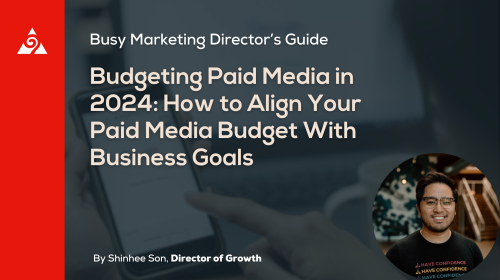From click to sale, closed loop analytics solves a problem digital marketers often face when developing strategies and analyzing results. In this video, Derrick Turner, Director of Services at Augurian, talks through some of the major benefits to using closed loop analytics, from determining what your budget should be to understanding where disruptions might arise across strategies.
Transcription
Hi, my name is Derrick Turner and I’m the director of services here at Augurian. I’m here to talk to you today about closed-loop analytics. We previously referenced closed-loop analytics and some conversations that I had had with Josh Becerra about sales and marketing alignment. I’m here today to go a little bit more in-depth of what that really looks like and why it matters.
Closed-loop analytics is really just the concept of being able to connect the information that digital marketers are able to get from click all the way down to a sale. A common problem that marketers face is just what level of information do they have about lead and lead quality.
Basically, every marketer is able to measure clicks. The publishers do a pretty good job of this. Most marketers should be able to get down to lead counts as far as how many leads are driving from those clicks, but a common drop-off point for a lot of companies is for the marketers to understand what happened afterwards, which is incredibly important if you ultimately want to drive more sales and if your team wants to understand what levers they have to drive those sales.
We run a process called closed-loop analytics, which is essentially trying to connect the website and the information we’re getting out there, often off of Google Analytics, with the CRM to understand when a sale happens, what drove that. Why I really like closed-loop analytics is it can help marketers answer questions such as, what should my budget be? Not just like, what is my budget? A lot of times, those might be handed down to somebody off of some data, but you can really get much more precise around what should my budget be and what exactly should I be able to expect from that marketing budget. In order to do that, businesses are going to have to understand one thing about their customer and that’s the lifetime value. In my experience, this can be a pretty tricky number to get to for some organizations. Sometimes it’s pretty straightforward, sometimes it’s not. In the cases where it’s not, basically, what I would recommend is coming up with some kind of math that you think gets you pretty close as maybe on the conservative end, but have some articulation of what you think that this is for your business itself. Once you have that number, you can actually go backwards and understand and answer a lot of questions that are important for good marketing.
Why is this valuable? Say your business that has a customer LTV of $10,000 and you’ve decided that you want to spend no more than 30% of revenue that you drive on marketing-related activities, that leaves you about $3,000 to generate a sale. Knowing that is incredibly powerful because it really fills in the blanks around where you need to be for the rest of your KPIs for your lead-driven marketing campaign. If you know that you need to spend no more than $3,000 in marketing per sale and you know that you have, let’s just say, 10% conversion rate across the path to keep the math easy, you can really feel on exactly what you should be getting for a qualified lead, exactly what you should be paying for a lead, and exactly how much you should be paying for a click. If we say that that’s 10%, we know that we need to be driving qualified leads for $300, leads for $30. We probably shouldn’t be paying more than $3 a click for this particular type of sale.
Businesses that have this information are going to be enabled in a few different ways. Not only are they going to be able to pass and communicate this information clearly to their marketing teams, they’re also going to be able to understand really where marketing should be coming in across all these different KPIs and understand earlier whether something is going to disrupt ultimately what you’re going to expect from marketing.
I hope this was helpful. If you have any questions about closed-loop analytics, feel free to reach out.



